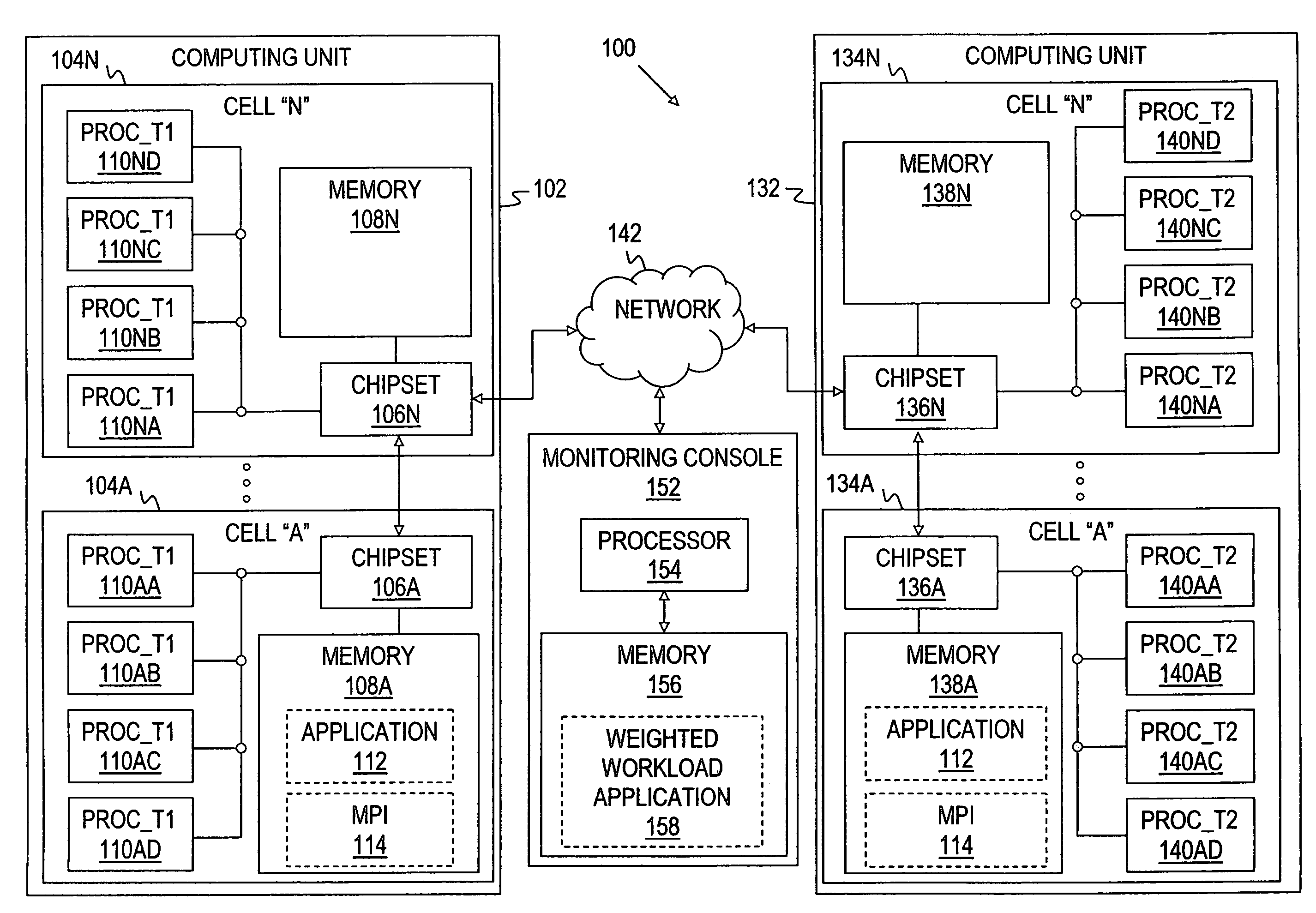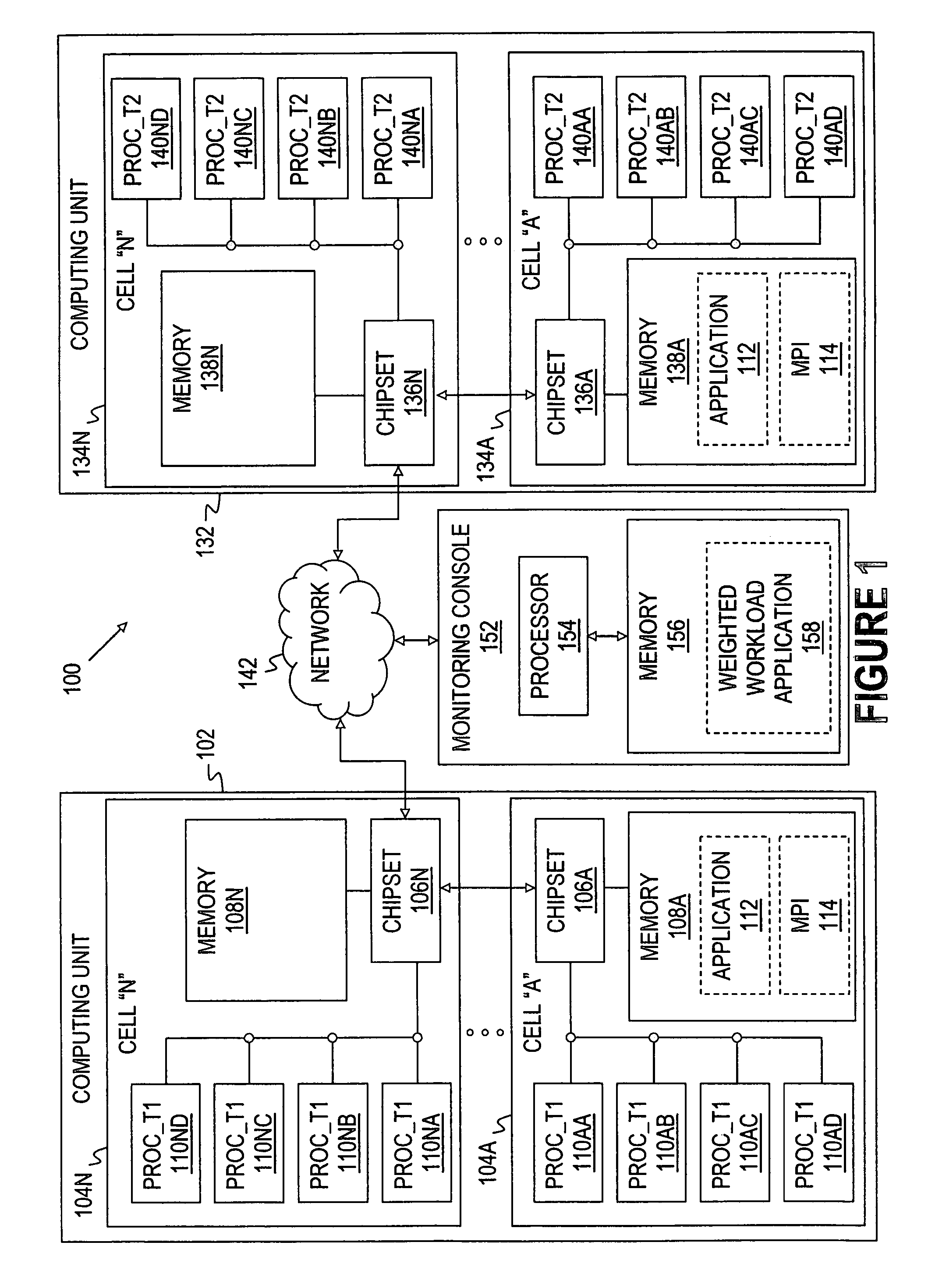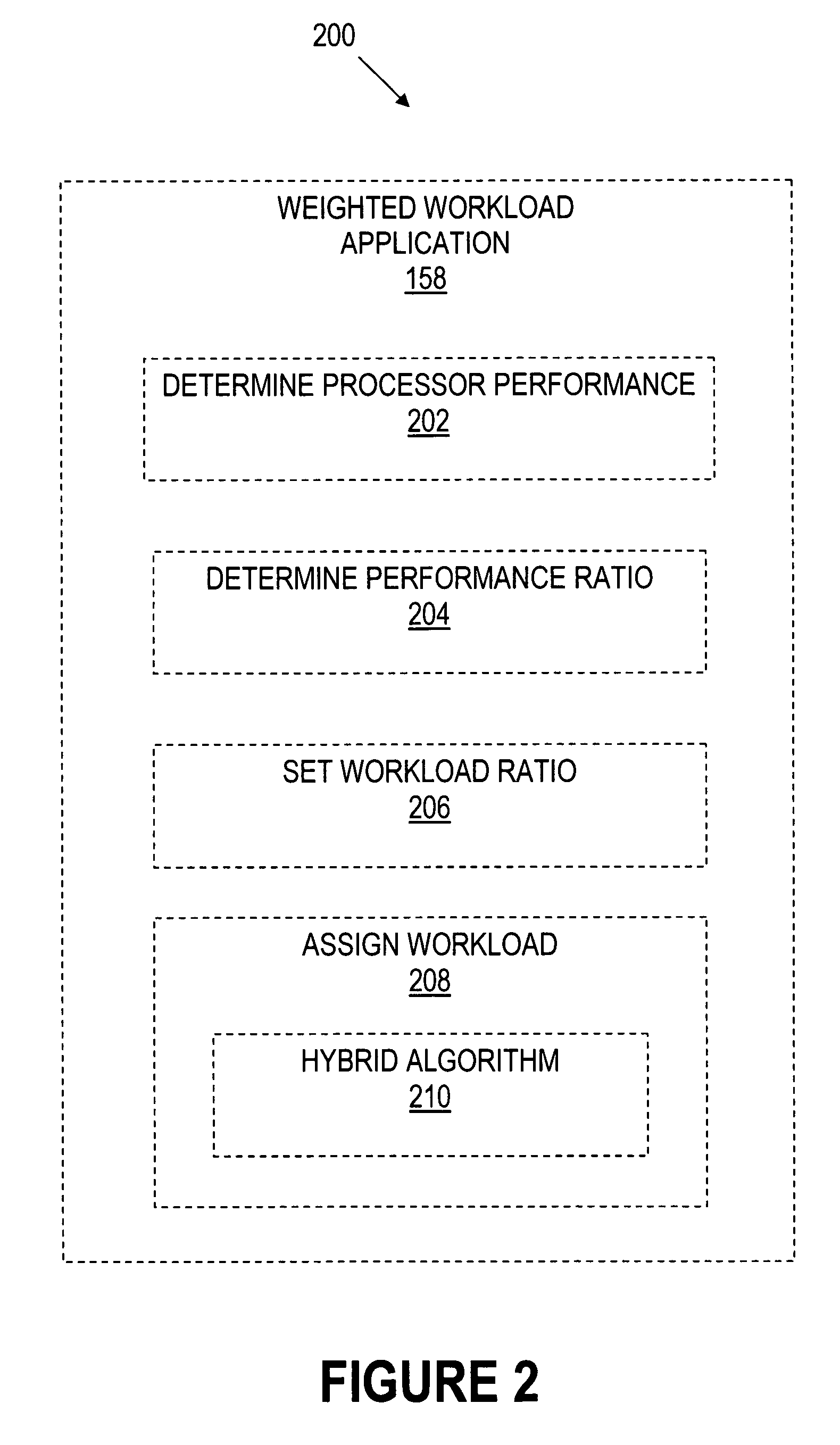Dynamic performance ratio proportionate distribution of threads with evenly divided workload by homogeneous algorithm to heterogeneous computing units
a technology of homogeneous computing and dynamic performance ratio, applied in the direction of digital computers, multi-programming arrangements, instruments, etc., can solve the problems of under-utilization of some processors, under-utilization of processors, and complicated efficient distribution of application workloads for parallel processing
- Summary
- Abstract
- Description
- Claims
- Application Information
AI Technical Summary
Problems solved by technology
Method used
Image
Examples
Embodiment Construction
[0011]The following discussion is directed to various embodiments of the invention. Although one or more of these embodiments may be preferred, the embodiments disclosed should not be interpreted, or otherwise used, as limiting the scope of the disclosure, including the claims. In addition, one skilled in the art will understand that the following description has broad application, and the discussion of any embodiment is meant only to be exemplary of that embodiment, and not intended to intimate that the scope of the disclosure, including the claims, is limited to that embodiment.
[0012]Embodiments of the invention are directed to methods and systems that improve parallel processing performance in a heterogeneous computing system (i.e., a computing system comprising processors with different performance capabilities due to clocking speed or to system features such as registers, cache size, latency and bandwidth). In at least some embodiments, the performance of each processor is calc...
PUM
 Login to View More
Login to View More Abstract
Description
Claims
Application Information
 Login to View More
Login to View More - R&D
- Intellectual Property
- Life Sciences
- Materials
- Tech Scout
- Unparalleled Data Quality
- Higher Quality Content
- 60% Fewer Hallucinations
Browse by: Latest US Patents, China's latest patents, Technical Efficacy Thesaurus, Application Domain, Technology Topic, Popular Technical Reports.
© 2025 PatSnap. All rights reserved.Legal|Privacy policy|Modern Slavery Act Transparency Statement|Sitemap|About US| Contact US: help@patsnap.com



